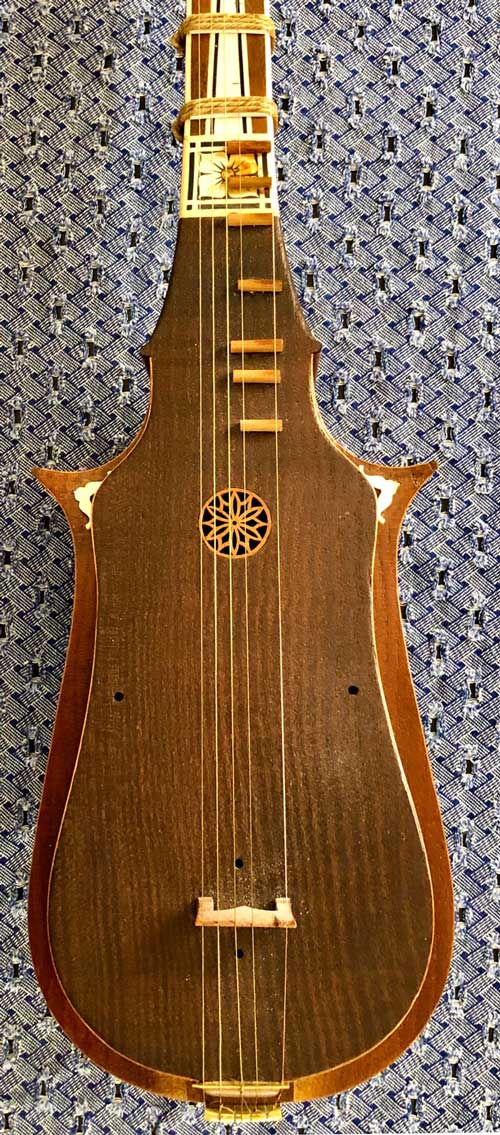Sato (instrument) on:
[Wikipedia]
[Google]
[Amazon]

 The Sato ( Uzbek: Сато) is a bowed
The Sato ( Uzbek: Сато) is a bowed
Abduvali Abdurashidov
is the foremost teacher of Sato and composer of the art of Shash Maqom (also called
File:Sato (full-length) held up to illustrate relative size. 01.jpg, the sato, a Central Asian instrument with 5 strings.
File:Sato bridge.jpg, The bridge of the instrument the sato is called xarak - also the word used for bench and donkey
File:Sato fingerboard inlays.jpg, the inlays are usually mother-of-pearl, and the frets are generally made of string or gut.
File:Sato soundbox and frets.jpg, the highest frets on the sato are made of wood.
File:Sato.bottom.jpg, The strings are tied off in a loop and anchored on the metal plate at the bottom. the top string is set slightly apart from the 4 drone strings, and is elevated higher above the finger board as well.
File:Pastimes of Central Asians. Musicians. A Man Practicing the Kamancha, a Long-necked Stringed Instrument WDL10824.png, 1869, Russian Turkestan. Long necked bowed "kamanche," but possibly related to Sato, based on instrument type and location

 The Sato ( Uzbek: Сато) is a bowed
The Sato ( Uzbek: Сато) is a bowed tanbur
The term ''Tanbur'' can refer to various long-necked string instruments originating in Mesopotamia, Southern or Central Asia. According to the ''New Grove Dictionary of Music and Musicians'', "terminology presents a complicated situation. Nowa ...
, or long-necked lute, played by performers of Central Asian classical and folk music, mainly in Uzbekistan
, image_flag = Flag of Uzbekistan.svg
, image_coat = Emblem of Uzbekistan.svg
, symbol_type = Emblem of Uzbekistan, Emblem
, national_anthem = "State Anthem of Uzbekistan, State Anthem of the Republ ...
. It has five strings. When plucked, the top string is pressed to the neck to produce a melody; the other four strings are drone strings. Frets on the neck are made of tied string. The soundboard has holes drilled in it for sound holes. It is made from mulberry wood.
Famous Uzbek musician Turgun Alimatov is solely responsible for reviving the art of playing the Sato, as it had completely disappeared for a number of centuries before he took it up in 1957. Thus he has been considered as the founder of the Sato and its playing style and technique.https://shahnameh.netlify.com/sato.htm The Shahnameh Guide To The Lutes Of Central Asia ProfessoAbduvali Abdurashidov
is the foremost teacher of Sato and composer of the art of Shash Maqom (also called
Shashmaqam
Shashmaqom ( ; ; ) is a Central Asian musical genre (typical of Tajikistan and Uzbekistan) which may have developed in the city of Bukhara. Shashmaqam means the six Maqams (modes) in the Persian language, dastgah being the name for Persian m ...
) in Tajikistan.
References
Tajik musical instruments Uzbekistani musical instruments Bowed string instruments {{Uzbekistan-stub